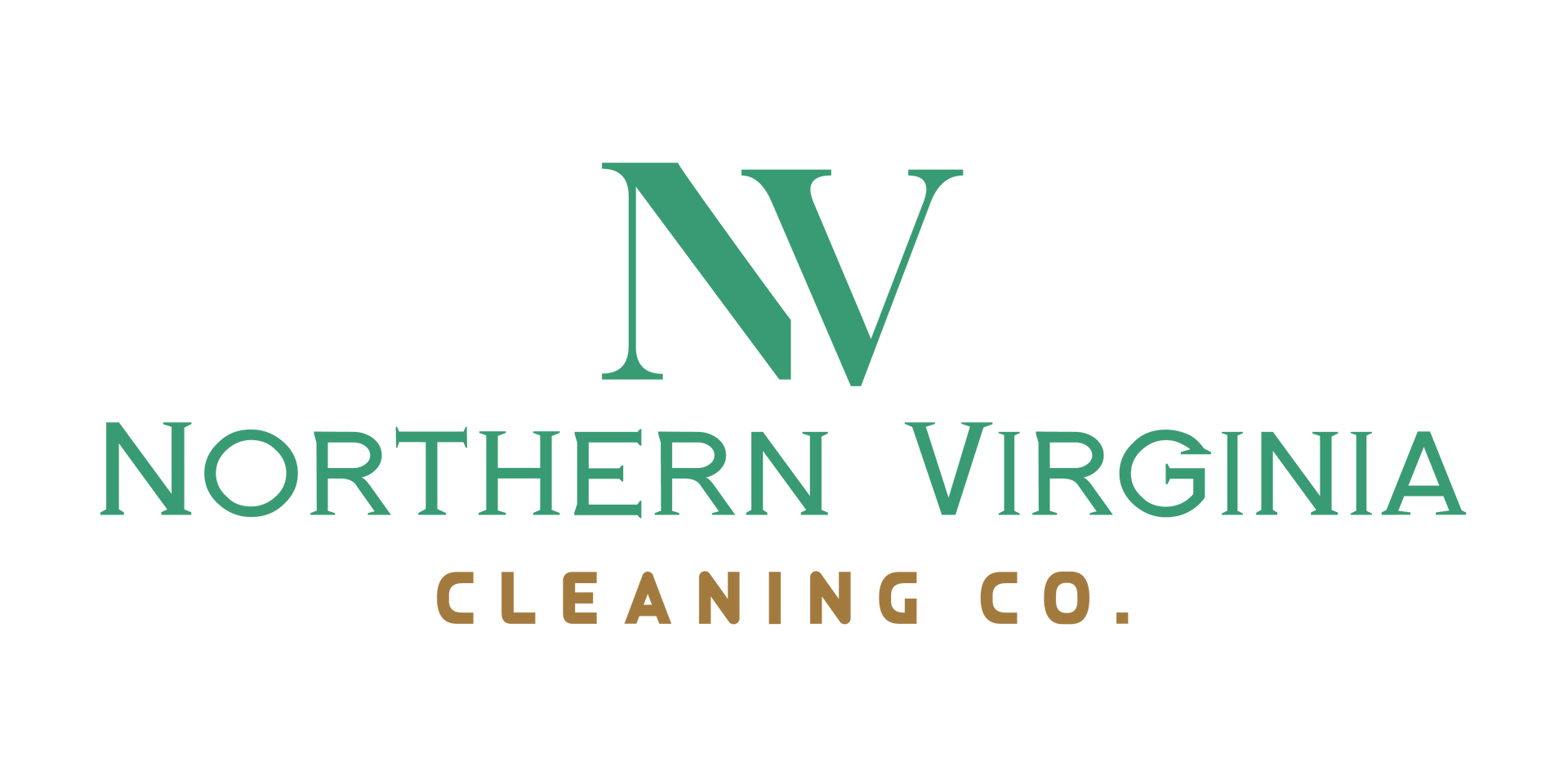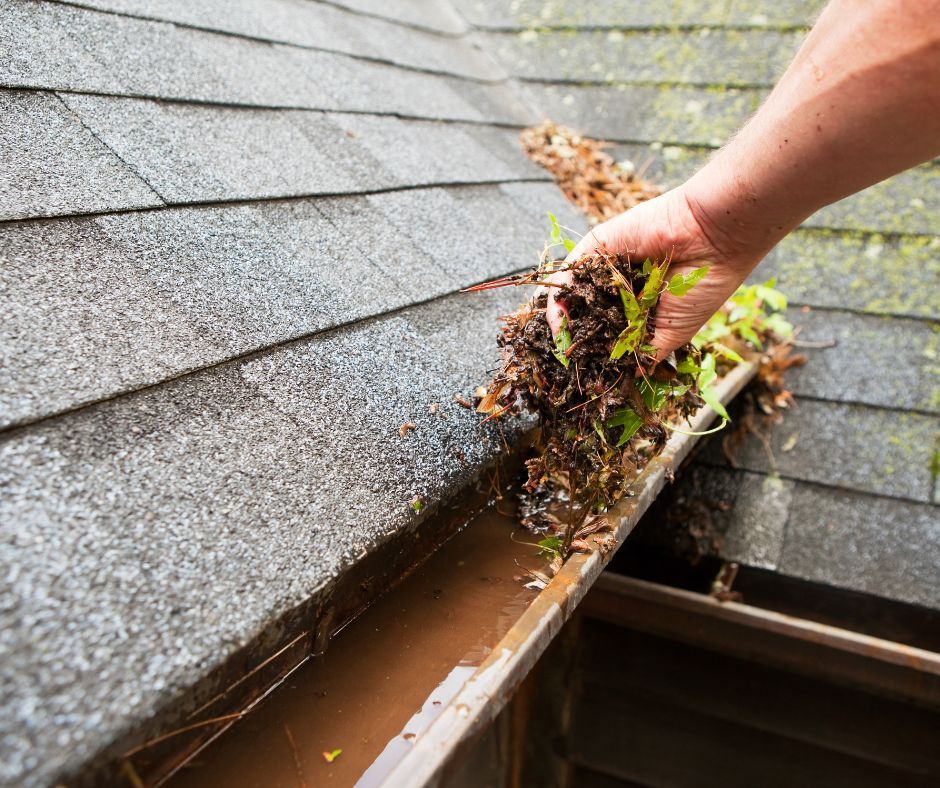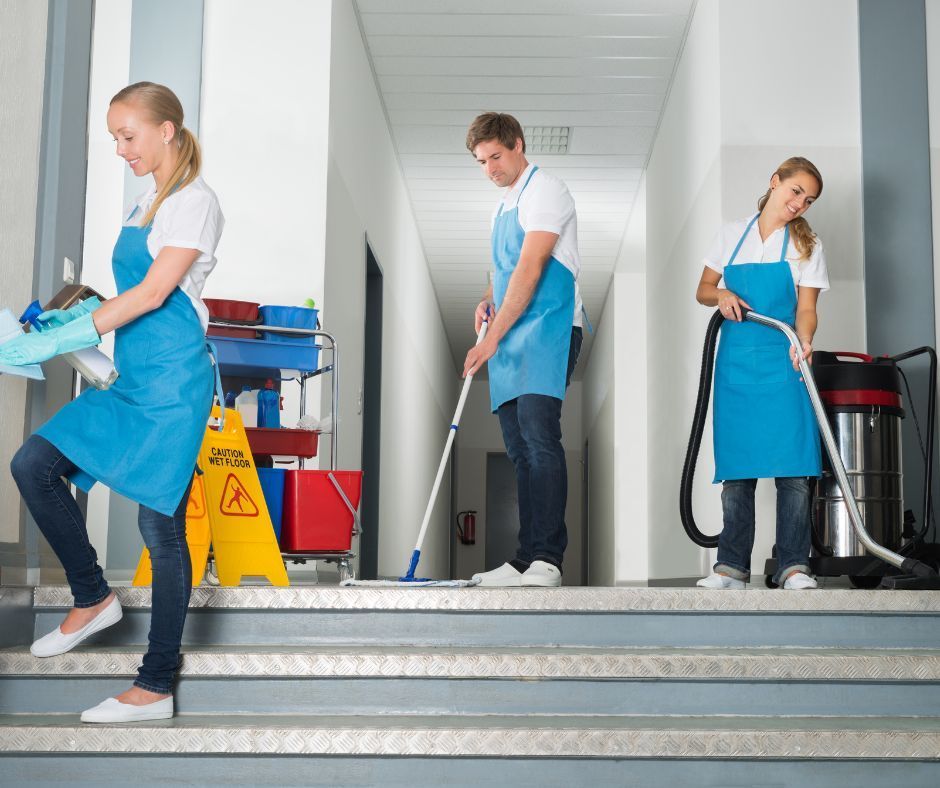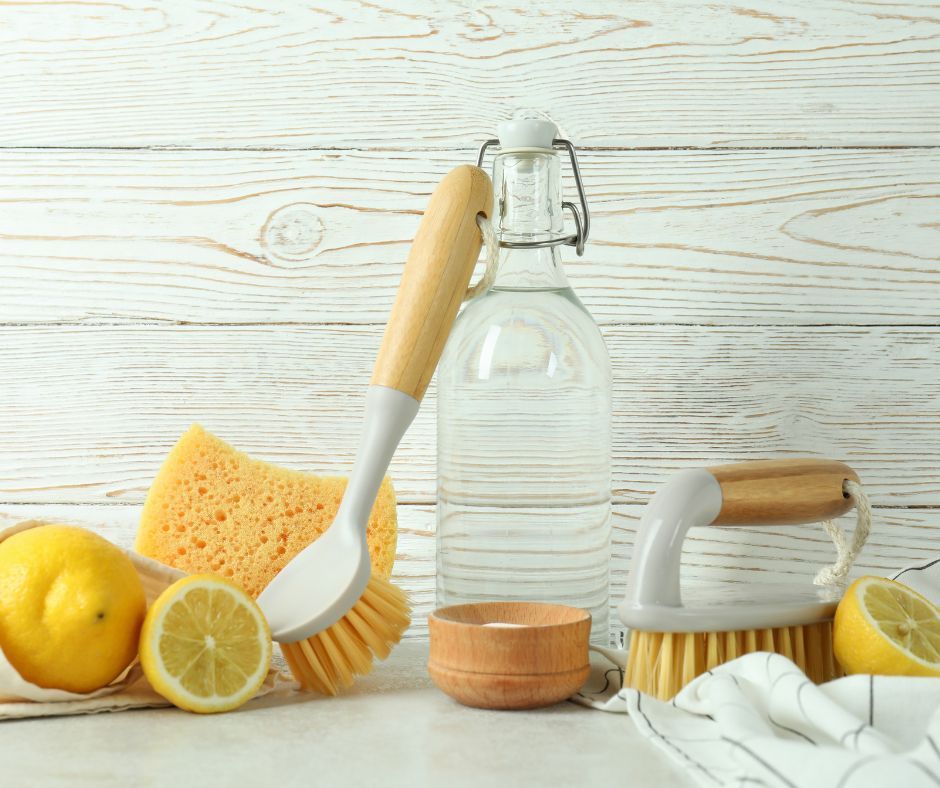How To Create A Disinfection And Sanitation Plan For Your Business?
Running a business is a challenging feat. With the current pandemic, ensuring your customers and employees feel safe while on the premises is even more critical. Having a thorough disinfection and sanitation plan can go a long way toward providing peace of mind for everyone involved. But how do you create such a plan? In this article, we’ll discuss exactly how to come up with an effective disinfection and sanitation plan for your business so that you can ensure the safety of all who step inside the premises.
The first step in crafting a deluxe deep cleaning and sanitation plan is understanding what needs to be done. It’s not enough to wipe down surfaces and assume everything is clean – specific processes must be followed to ensure proper disinfection. Knowing those steps will help you create an effective plan covering all the bases.
Finally, it’s time to create an actionable plan once you clearly understand what must be done. This means listing the necessary steps, determining who will be responsible for each task, and establishing a timeline for each part. With careful planning and execution, you’ll soon have a robust disinfection and sanitation plan in place – one that will keep everyone involved safe from harm.
Definition Of Disinfection & Sanitation
Disinfection and sanitation are essential for businesses to protect their customers and employees from potential health hazards. Disinfection is the process of killing harmful microorganisms, such as bacteria and viruses, on surfaces. Sanitation is keeping a space clean by removing dirt, germs, and other types of contamination. Businesses must create a sanitation plan that outlines how they will keep surfaces and items clean to protect workers and customers from potential exposure to these contaminants.
When creating a sanitation plan for your business, it’s vital to include guidelines for cleaning high-touch surfaces regularly throughout the day with disinfectants. High-touch surfaces are items frequently touched by multiple people throughout the day, such as doorknobs, countertops, tables, desks, phones and computers. Additionally, it’s important to include instructions on how often janitorial staff should sanitize bathrooms or any areas where food is prepared or served.
It should also be noted that while regular disinfection and sanitation help reduce the risk of spreading germs and illnesses, it can’t eliminate all risks. Therefore, businesses must take additional measures like social distancing protocols and frequent hand washing to protect their patrons and employees.
Assess Your Business Needs
Now that you understand the definition of disinfection and sanitation, it is time to assess your business needs +. This is essential in creating a successful sanitation plan for your business.
Start with taking into consideration the type of facility and its associated activities. Next, consider what items are necessary to operate your business safely and efficiently. And identify any hazards that may be present in the environment, such as poor ventilation, inadequate lighting, or overcrowding. Finally, consider additional factors that could increase the risk of contamination or spread of disease, such as visitors coming from outside or sharing equipment with others.
Review existing policies and procedures for cleaning and disinfecting surfaces and personal protective equipment (PPE). If these policies are not up-to-date or comprehensive enough for your particular needs, develop new ones based on current guidance from health authorities. In addition, ensure that all staff receive proper Training on using the cleaning products appropriately and adequately and putting on and removing PPE when needed.
Lastly, you should evaluate potential sources of contamination in the workplace and determine how frequently it needs to be cleaned or disinfected. Then, create a schedule for regular cleaning and disinfection tasks that considers all areas of your workplace, such as door handles, desks, keyboards, stair rails etc., and any shared spaces like bathrooms or break rooms. Please ensure this schedule is communicated with everyone who works there so they know when to perform these tasks.
Choose Appropriate Supplies
Choosing the right supplies is critical to creating an effective disinfection and sanitation plan for your business. It’s essential to ensure you use products designed specifically for cleaning and disinfecting. Any “sanitizer” or “disinfectant” product should be safe for your business.
You’ll also want to ensure you have enough supplies for the job. This includes disposable gloves, masks, paper towels, and sanitizing wipes or sprays. Ensure you stock up on enough items to clean and sanitize frequently throughout the day.
It’s also essential to select products which meet EPA standards for killing germs and bacteria. Read the labels carefully to ensure you get the best employee and customer protection.
Construct A Work Schedule
Creating a work schedule for your business’s disinfection and sanitation plan is vital. It should be detailed enough to ensure all business areas are thoroughly cleaned and sanitized but flexible enough to account for any changes in operations or staffing.
Start by listing all areas that need disinfected or sanitized in your business. Then, assign each area a frequency of cleaning based on how often it is used or touched. For example, high-touch surfaces like doorknobs, light switches, and countertops should be cleaned more often than other areas like shelves or walls.
Next, create an action plan outlining who will be responsible for completing the task, what supplies they’ll need (e.g., cleaning supplies), and when it needs to be done. Finally, ensure you include a backup plan in case your regular staff is unavailable or unable to complete the task. That way, you can rest assured that your business remains clean and safe for everyone who enters it.
Utilize Personal Protective Equipment (PPE)
Now it is crucial to turn our attention to using Personal Protective Equipment (PPE). This can include items such as masks, gloves, goggles, and face shields. Business owners and employees must take the necessary precautions to protect themselves and customers during the pandemic. Therefore, PPE should be readily available for all workers and customers who enter the premises.
Additionally, employers must provide Training on how to put on and remove PPE to ensure safety correctly. Training should also be provided about how often PPE needs to be changed or cleaned and how to dispose of used PPE safely. Employers should also have a plan for when someone enters the premises without proper PPE.
Business owners must ensure that their staff know the importance of wearing their PPE in the workplace. This will help protect customers, employees, and themselves from becoming infected with the virus. In addition, by following these guidelines, businesses can help reduce the risk of an outbreak within their establishment.
Implement Proper Hand Washing Techniques
Businesses need to ensure proper handwashing techniques are implemented. Employees and customers should know the importance of washing their hands with soap and water. They should also be taught the recommended amount of time to spend handwashing, which is at least 20 seconds.
Businesses can set up signs in restrooms or other public areas that remind employees and customers to wash their hands. They should also provide ample soap, paper towels, and hot water for handwashing. Additionally, businesses must ensure employees have access to a sink with running water and soap to clean their hands properly.
Businesses must ensure proper handwashing techniques are followed, which is vital in reducing the spread of viruses and diseases among employees and customers. Implementing these measures will help keep everyone safe while on your premises.
Establish Cleaning & Sanitizing Protocols
Establishing cleaning and sanitizing protocols for your business is vital to creating an effective disinfection and sanitation plan. First, list all the areas that must be regularly cleaned and sanitized in your industry. This could include surfaces, door handles, bathrooms, break rooms, equipment, and other physical contact spaces. Once you have a list of areas that need to be addressed, determine what cleaning supplies are necessary for each site. For example, you may require different bathroom cleaners and disinfectants than you would for desktops or other high-touch surfaces.
Next, assign responsibility for the cleaning and sanitizing tasks to staff members who can effectively follow the protocols. This includes Training on proper techniques, such as how often certain areas should be cleaned and which products should be used in each room. Finally, ensure that staff members understand that they must adhere to the established protocols to maintain a safe working environment for everyone in the business. Ensure everyone knows these protocols by including them in employee handbooks or displaying reminders throughout the workplace.
Identify High-Touch Areas For Extra Attention
Identifying the areas of your business that are touched the most frequently is essential. This includes door handles, computers, telephones, countertops, and other surfaces that may come in contact with customers or employees. You should also consider any items that customers or employees bring into your business, like clothing or personal items.
Once you’ve identified these high-touch areas, you’ll need to create a plan for cleaning and disinfecting them regularly. This plan should include instructions on cleaning and what products to use for each area. Make sure to use an EPA-approved disinfectant on all surfaces, and be sure to follow the manufacturer’s instructions carefully. A different cleaning product for hard surfaces like countertops and computer keyboards is also good.
And train all your staff on proper sanitation procedures and provide them with the necessary supplies. Everyone must know how often they should disinfect high-touch areas and what products they should use. Regular inspections ensure that everyone is following proper sanitation guidelines.
Develop A Disposal Plan For Used Supplies
Now that you have identified the high-touch areas of your business, it is time to develop a disposal plan for any used supplies. This plan should include protocols for safely disposing paper products, such as towels and tissues, cleaning cloths, gloves, masks, and other disposable items. It is important to note that each item must be disposed of appropriately to ensure the safety of your staff and customers.
The first step in developing a disposal plan is to ensure that all materials used are single-use only. Any reusable items should be washed and disinfected between uses. Once items are no longer usable or have been contaminated with a virus or bacteria, they should be disposed immediately into a designated waste bin. It is essential to label each container clearly so employees know which materials go where.
When disposing of materials, it is important to remember proper hygiene techniques, such as washing hands before handling any materials and wearing gloves. Additionally, it is wise to keep track of the number of supplies used daily so you can stay aware of when more stores need to be ordered or replaced. Following these precautions and implementing an effective disposal plan in your business can help reduce the spread of germs and viruses while keeping your staff and customers safe.
Provide Employee Training & Education
Employee training and education are essential for a successful disinfection and sanitation plan. Employees must be aware of the procedures that need to be followed, as well as any new regulations or policies that have been put in place. It is vital to ensure that all employees understand the importance of following these protocols and how they can help protect themselves, their coworkers, and customers from potential disease or illness.
The primary step in providing employee training is creating a comprehensive list of guidelines for each employee. This should include details about proper handwashing techniques, cleaning procedures for surfaces and equipment, safe handling of food items, use of personal protective equipment (PPE), and any other relevant information regarding safety protocols. The list should also provide clear instructions on how employees should respond if they come into contact with someone who has been confirmed to have COVID-19 or any other contagious illness.
Once the guidelines are clearly outlined, allowing employees to ask questions and receive feedback on their understanding of the material is vital. This can be done through online seminars, webinars, or in-person sessions with supervisors or managers. Ensuring that each employee comprehends the safety measures outlined in your disinfection and sanitation plan can help reduce the risk of spreading germs within your workplace.
It’s critical for businesses to adequately train employees on proper safety procedures related to disinfection and sanitation plans for them to be effective. Doing so will help keep everyone safe and demonstrate that your business takes customer health seriously.
Monitor Cleaning & Sanitizing Procedures
Now that employees have been educated on the importance of a disinfection and sanitation plan, it is time to monitor cleaning and sanitizing procedures. To ensure that all business areas are clean and free from germs, management should create a system to check for compliance with the plan. This could include regularly inspecting surfaces for dirt, dust, and other debris and checking to make sure cleaning solutions are working correctly.
Frequent spot checks should identify areas that may need to be cleaned or sanitized correctly. At each spot check, management should ask employees questions about cleaning and sanitizing procedures. Corrective action must be taken immediately if any areas lack cleanliness or sanitation. Additionally, management should review logs of daily cleaning activities to ensure they are being completed correctly.
It is also essential for management to stay up-to-date on new products or techniques for cleaning and sanitizing. As new technologies become available, they can provide more efficient ways of ensuring a disinfected environment within the business. In addition, by staying informed on new methods of disinfection and sanitation, companies can offer a safe environment for their customers and employees.
Utilize Advanced Technologies For Improved Hygiene
Advanced technologies can be used to improve hygiene in the workplace further. For example, automated cleaning systems, such as robotic vacuums, can keep floors clean and sanitized. These high-tech machines have sensors that detect dirt and debris, allowing them to target specific areas. They are also equipped with ultraviolet light, which kills bacteria and germs on contact. Additionally, infrared cameras can be installed in doorways or other high-traffic areas so that employees’ temperatures can be automatically monitored. This can help reduce the risk of bringing infectious diseases into the workplace.
Technology isn’t just limited to cleaning systems; it can also aid in monitoring your disinfection plan. Software programs can provide detailed records of all sanitation procedures that have been completed and alert management when maintenance is due. This allows for quick responses if any potential health issues arise. It also provides a way for businesses to stay compliant with local guidelines and regulations regarding health and safety.
By utilizing advanced technologies in their disinfection plans, businesses can ensure that their work environments remain safe and healthy for all employees and customers. With this additional layer of protection in place, companies will be better able to protect their people from the spread of contagious illnesses while maintaining a productive workplace.
Maintain Documentation Of Cleaning & Sanitizing Procedures
Creating and maintaining a disinfection and sanitation plan for your business is essential for the safety of customers, clients, and employees. A critical part of this plan is to ensure that all cleaning and sanitizing procedures are documented thoroughly.
The documentation should include step-by-step instructions on how each area should be cleaned and sanitized. It should also have which products or tools to use, what protective equipment must be worn when cleaning, and how often each area needs to be cleaned or sanitized. Additionally, it’s essential to document what type of inspections were done after the cleaning. This will help ensure that the job was done correctly and that no areas were missed.
Comprehensive documentation makes it easier for businesses to show they take precautions against germs and viruses. It also helps keep everyone safe by ensuring that all cleaning protocols are followed correctly every time.
Evaluate Performance And Make Necessary Adjustments
Once the cleaning and sanitizing procedures are in place, assessing their effectiveness and making necessary adjustments are essential. To do this, you should review your plan regularly to ensure that all business areas are adequately cleaned and sanitized. Additionally, monitoring employee compliance with the cleaning and sanitizing protocols is essential. This will enable you to identify any potential problems or issues with the plan that must be addressed.
You can also use customer feedback to evaluate your disinfection and sanitation plan. Ask customers how they feel about the cleanliness of your business premises, as well as whether they have noticed any changes in hygiene since implementing your plan. This information can help you identify areas where improvements can be made. Additionally, you may conduct regular inspections of the premises to verify that cleaning and sanitizing protocols are followed correctly.
Finally, once all evaluations have been completed and necessary adjustments have been made, it is essential to document all changes in the disinfection and sanitation plan for future reference. Doing so will ensure employees know of any modifications or updates they must follow to maintain a hygienic environment.
Reassess And Update Plan As Needed
It’s important to regularly reassess and update your business’s disinfection and sanitation plan. The situation can change quickly, so staying up-to-date with best practices is essential. Here are four steps to help you stay on top of it.
1. Periodically review the CDC guidelines and other health authority recommendations related to your industry.
2. Ask employees for feedback about what’s working and not working with the current plan.
3. Monitor the situation in your local area and adjust the plan accordingly if needed.
4. Ensure all employees are aware of any changes or updates to the plan.
Keeping a close eye on the latest information and ensuring everyone is on board with any changes will help ensure your business stays safe and compliant with regulations during these uncertain times.
Creating a disinfection and sanitation plan for your business is vital to keeping customers, employees, and the facility safe. By following the steps outlined above, you can create a comprehensive plan that will help reduce the risk of contamination and illness. Start by assessing your business needs to determine what supplies and technologies you need. Then construct a work schedule, utilizing PPE and other advanced technologies for improved hygiene. Next, document all cleaning and sanitizing procedures to evaluate performance and adjust as needed. Finally, reassess your plan regularly to ensure it meets the changing needs of your business. With the right strategy, you can protect your employees and customers while running your business smoothly.
The post How To Create A Disinfection And Sanitation Plan For Your Business? appeared first on Northern Virginia Cleaning.
About Us
Northern Virginia Cleaning Company keeps both homes and businesses sparkling clean, promoting a healthy and productive environment for everyone.
2221 Hunter Mill Rd, Vienna, VA 22181
+17034203037
9:00 - 17:00



